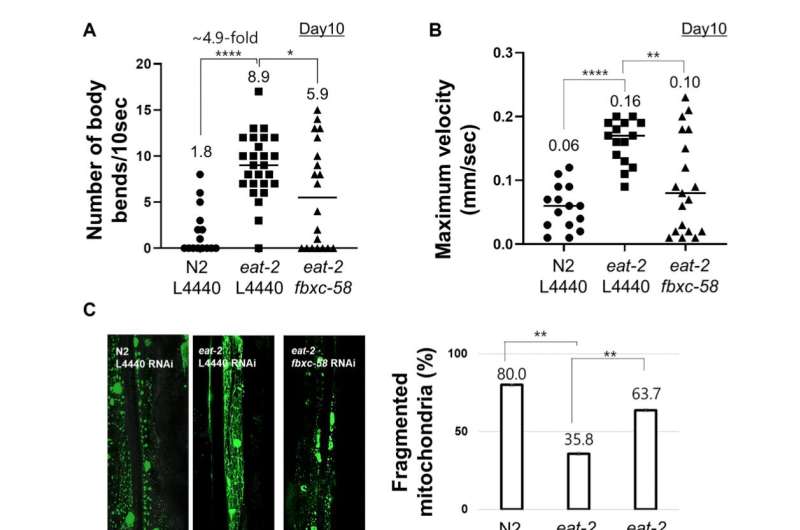FBXC-58 mediates dietary restriction effects on mitigating muscle aging. Credit: Aging (2023). DOI: 10.18632/aging.204477
Dietary restriction (DR) is a highly effective and reproducible intervention that prolongs longevity in many organisms. The molecular mechanism of action of DR is tightly connected with the immune system; however, the detailed mechanisms and effective downstream factors of immunity that mediate the beneficial effects of DR on aging remain unknown.
In this new study published in Aging, researchers from the Korea Food Research Institute and the University of Science and Technology (in Daejeon, South Korea) investigated the immune signaling that mediates DR effects. The team used Caenorhabditis elegans (C. elegans) to understand the underlying molecular mechanisms of aging and immunity.
"We found that the F-box gene, fbxc-58, a regulator of the innate immune response, is a novel mediator of DR effects on extending the health span of C. elegans," state the researchers.
Fbxc-58 is upregulated by DR and is necessary for DR-induced lifespan extension and physical health improvement in C. elegans. Furthermore, through DR, fbxc-58 prevents disintegration of the mitochondrial network in body wall muscle during aging.
The researchers found that fbxc-58 is a downstream target of the ZIP-2 and PHA-4 transcription factors, the well-known DR mediator, and fbxc-58 extends longevity in DR through an S6 kinase-dependent pathway. Thus, the team proposed that fbxc-58 may provide a new mechanistic understanding of the effects of DR on healthy aging and elucidate the signaling mechanisms that link immunity and DR effects with aging.
The researchers conclude, "Thus, we propose that investigating the molecular mechanism of action of F-box proteins, including fbxc-58, in DR will shed light on means to prevent sarcopenia and offer a potentially practical means of encouraging healthy aging via DR."
More information: Jeong-Hoon Hahm et al, The innate immune signaling component FBXC-58 mediates dietary restriction effects on healthy aging in Caenorhabditis elegans, Aging (2023). DOI: 10.18632/aging.204477
Provided by Impact Journals LLC























